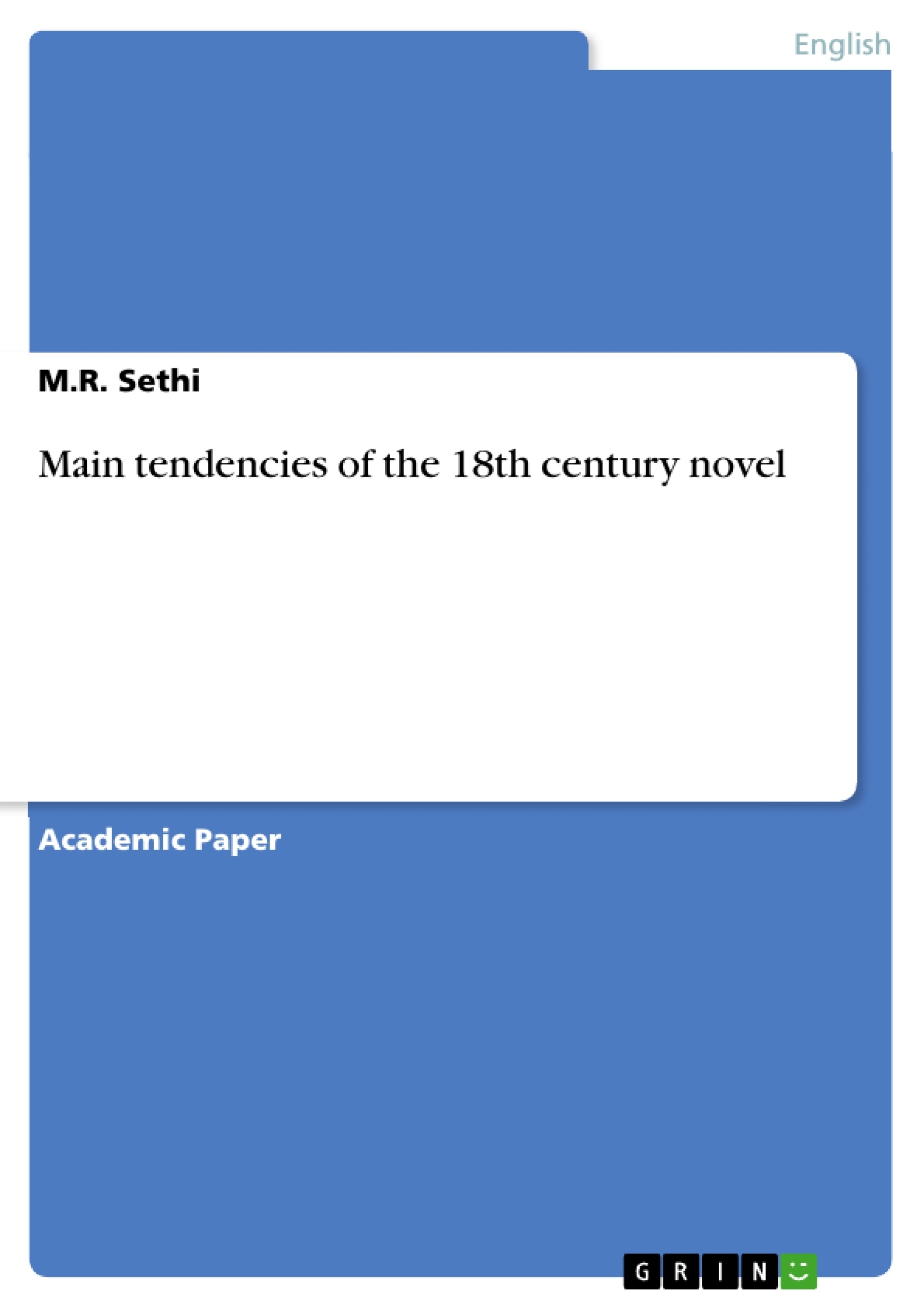During the eighteenth century a number of innovations in both subject matter and narrative technique took shape. The novelists had to reconcile the demands of narrative order and the realistic portrayal. The art of fiction often involves the close imitation of true narratives. The novelists adopted various techniques in order to present the form and content of their works. Some of them, like Defoe, Defoe adopted the episodic technique, which more often than not produced a loose baggy form of a novel, without much sense of narrative order or progression or organic unity. Later Fielding self-consciously uses Chapters and Books as in his novel Joseph Andrews. This conflict between the demands of realistic presentation and aesthetic narrative order is evident in Sterne's anti-novel Tristram Shandy. Sterne blasts the conventions of the Novel even before this genre has had a chance to become a settled form.
Table of Contents
- Shape and form
- Realism
- Novel of the Middle Class
- Return of the Picaresque Novel
- In America
- In England
- Gothic Novel
- In England
- In America
- Femino-centric Novels
- Women Novelists
Objectives and Key Themes
This text explores the main tendencies and innovations of the 18th century novel, focusing on the evolution of narrative technique and the changing social context that influenced the genre's development. It examines how realism, the portrayal of middle-class life, and the rise of the picaresque and gothic subgenres shaped the novel form.
- The emergence of realism as a key concern in the 18th century novel
- The shift towards representing middle-class life and experiences
- The revival and evolution of the picaresque novel
- The development of the gothic novel and its conventions
- The increasing prominence of femino-centric novels and the emergence of women writers
Chapter Summaries
- Shape and form: This section examines the innovations in subject matter and narrative technique that emerged during the 18th century. It highlights the conflict between the demands of realistic portrayal and narrative order, exemplified by the works of Defoe, Fielding, and Sterne.
- Realism: This section explores the concept of realism in the 18th century novel and its emphasis on depicting everyday life, particularly of lower socioeconomic classes. It discusses the techniques employed by authors like Defoe and Fielding to achieve this realism, such as the use of first-person narration and epistolary form.
- Novel of the Middle Class: This section discusses the rise of the middle class in the 18th century and its impact on the novel. It explores how novelists began to focus on characters and plots drawn from this social segment, reflecting the growing influence of the middle order.
- Return of the Picaresque Novel: This section examines the revival of the picaresque style in the 18th century, highlighting its focus on protagonists from lower classes, panoramic scenes, and mixed discourse styles. It presents examples of picaresque novels in both America and England, contrasting the works of Brackenridge and Lennox with Cervantes's Don Quixote.
- Gothic Novel: This section explores the development of the gothic novel as a genre characterized by mystery, superstition, and terror. It examines the conventions associated with gothic fiction, such as dark settings, supernatural elements, and themes of madness and revenge. The section provides examples of gothic novels in both England and America, highlighting the works of Walpole, Radcliffe, and Brown.
- Femino-centric Novels: This section examines the emergence of femino-centric novels in the 18th century, reflecting the growing influence of women as readers and writers. It discusses the portrayal of women's experiences and perspectives in novels, particularly through the works of Defoe and Richardson.
Keywords
This text focuses on key topics such as realism, social class, narrative technique, genre evolution, picaresque, gothic fiction, femino-centric novels, women writers, and the emergence of a reading public in the 18th century.
- Quote paper
- Prof. M.R. Sethi (Author), 2020, Main tendencies of the 18th century novel, Munich, GRIN Verlag, https://www.grin.com/document/932944




